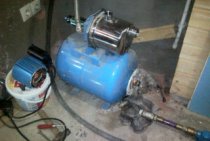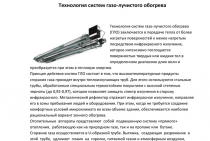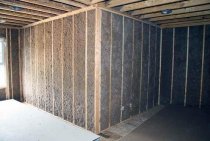The most environmentally friendly heaters
Thanks to external thermal insulation, the cost of heating houses in the winter is reduced, as well as the cost of air conditioning in the warm season.
But when choosing a heater, it is necessary to pay attention not only to the effectiveness of the created barrier. The insulation and cladding of a wooden house should be as environmentally friendly and safe as possible for the health of people living in the mansion.
There are several types of insulation materials that meet these requirements:
- Fiberglass ecological insulation for a wooden house.
- Ecowool, in the production of which waste paper is used.
- Cotton insulation.
- Eco-friendly linen insulation for a wooden house.
Some believe that polystyrene foam and basalt fiber can be considered environmentally friendly, but this is not entirely true, since styrene, which is a carcinogen, can be observed from polystyrene foam, and basalt wool emits formaldehydes, which are also carcinogens.
Before you finally decide which ecological insulation for a wooden house to choose, you need to familiarize yourself with the advantages and disadvantages of materials.
Fiberglass insulation in the form of glass wool
In their production, quartz sand and a certain percentage (20-40) of secondary glass are used. As a binder, a small amount of formaldehyde is used, which is safe for health, as well as acrylic or organic binders.
True, fiberglass eco-friendly heaters for a wooden house are also characterized by several disadvantages.
In the case when there is no membrane coating or foil on the material, a large amount of dust is released when it is cut, therefore, uncoated mineral wool can only be used when installing external wall insulation, since fiberglass dust can cause severe irritation if it enters the respiratory tract. In addition, glass wool is characterized by strong hygroscopicity, sagging when installed vertically and inability to resist the spread of flame.
Cotton insulation
Insulation for the facade of a wooden house is considered almost the most environmentally friendly material, since recycled denim is used in its production. Cotton materials for warming a wooden house can be mounted without the use of protection.
The heat insulator, in addition to its main purpose, is also characterized by a high noise absorption coefficient, therefore, in addition to external insulation in Western countries, it is used for interior decoration of a home theater.
The disadvantage of cotton insulation is its easy flammability. In order to get rid of this, they use the same additives as in the case of ecowool. Also, the disadvantages include the fact that cutting and mounting the material are quite difficult tasks, so you need to resort to the services of professionals.
Linen insulation
External insulation of a wooden house with linen mats makes it possible to completely forget about the harm to family health, since the material is characterized by almost one hundred percent environmental cleanliness. It has no artificial ingredients and does not emit toxic substances. Linen insulation is so safe that it is often used in the internal insulation of children's rooms.
As for the service life, it is also quite high - up to sixty years, and during the entire period of operation its characteristics practically do not change - it is not subject to subsidence, does not rot, is not affected by mold fungi and pests.
The material does not contribute to combustion, is difficult to ignite, and does not emit toxins when smoldering. The heat transfer coefficient of the material is lower than that of fiberglass boards, and is also equal to that of basalt wool and expanded polystyrene.


